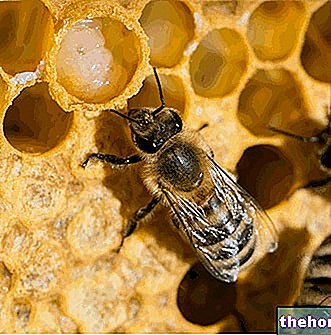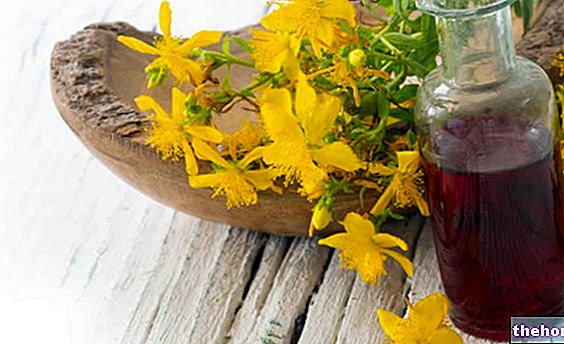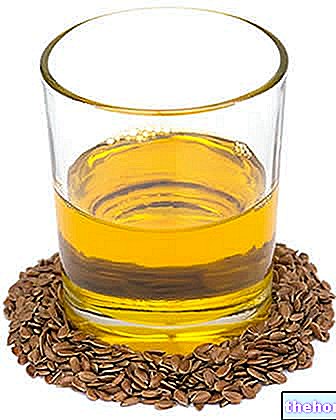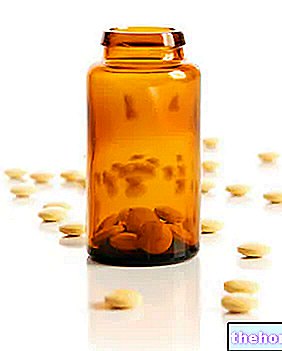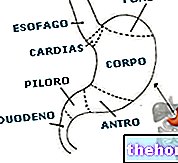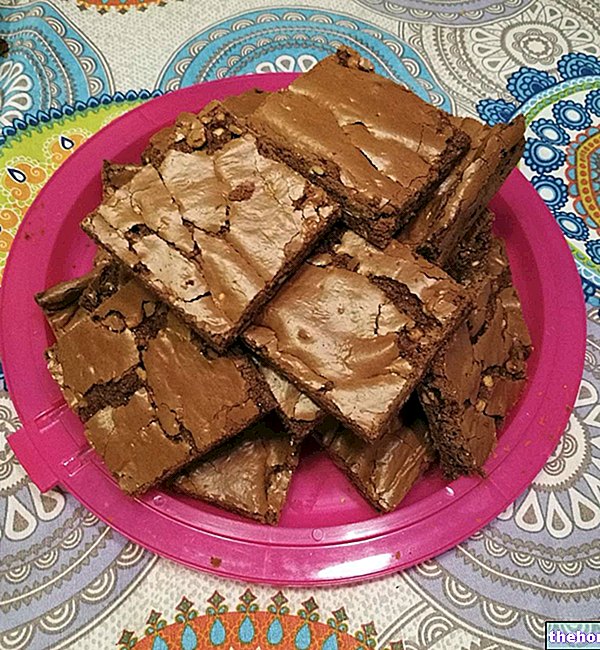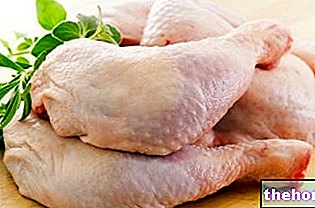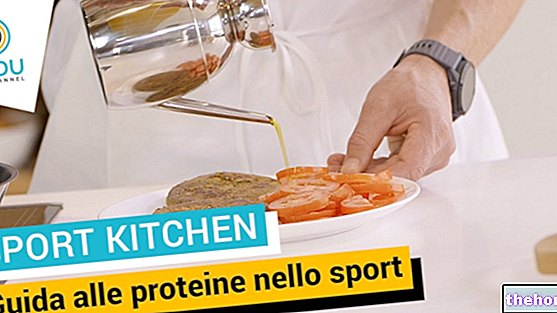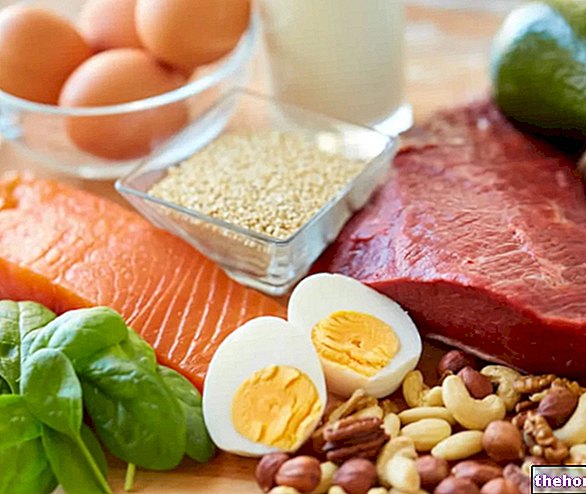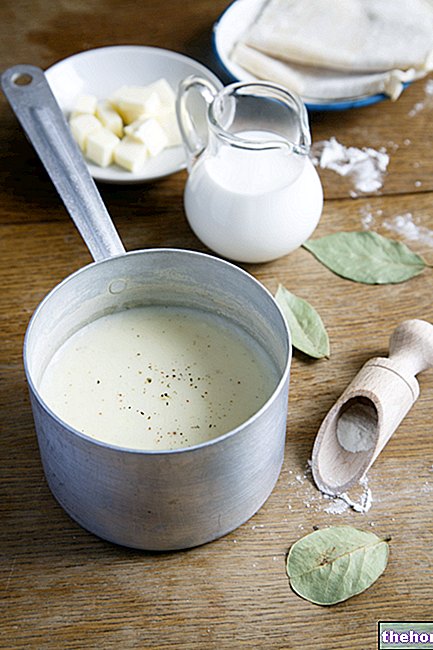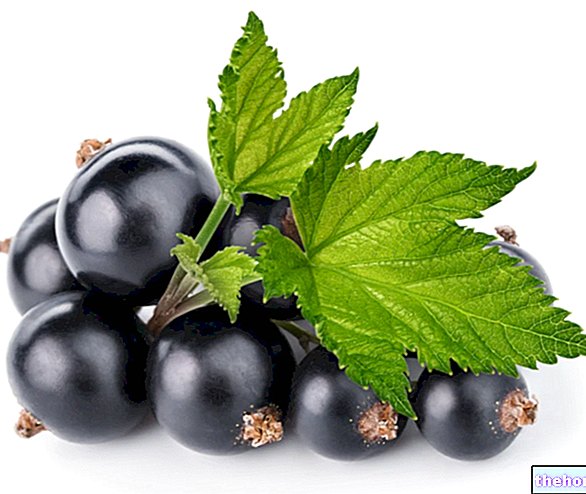Generality
L"Helicobacter pylori it is a pathogenic bacterium that finds its ideal habitat in the mucus that lines the internal walls of the human stomach. It is estimated that the infection affects more than 50% of the world population, even if only in some cases it is symptomatic; indicatively, about 10-20% of affected subjects will develop forms of gastritis and peptic ulcers associated with the infection.

Currently, the reference therapy to eradicate Helicobacter pylori infection is based on the joint use, for one or two weeks, of two or more antibiotics (such as amoxicillin and clarithromycin) and a drug capable of reducing gastric acidity. (proton pump inhibitors, such as lansoprazole and omeprazole), according to different therapeutic schemes.
Although effective, this therapy has some negative implications, such as the favoring effect on the development of antibiotic resistance (already problematic today), the cost of the therapy and the side effects associated with the individual active ingredients.
Pending an effective vaccine, different natural approaches have been studied, based on the use of herbal extracts, probiotics and nutraceuticals.
Even if a natural treatment process hardly guarantees the complete eradication of the pathogen, it can still help to keep it under control, avoiding the development of complications.
Plants, Foods and Spices
Some plants are able to produce antibacterial substances, also active against the "Helicobacter pylori. Unfortunately, despite the powerful antibiotic activities recorded in in vitro studies, very often these natural remedies are not very effective in fighting the bacteria when administered to human volunteers. This is the case, for example, of "garlic, whose antibiotic activity against the "Helicobacter pylori, underlined by many in vitro studies, has been disproved in vivo by several clinical studies.
If the usefulness of garlic seems rather scarce, that of broccoli takes advantage of some timid scientific confirmations, both in vivo and on animal models. It seems that the consumption of broccoli reduces the infection, without however being able to eradicate it; in addition to a direct bacteriostatic mechanism, it is also hypothesized a protective effect of the vegetable on the gastric mucosa. The antibacterial activity would be attributed to isothiocyanates, in particular to sulforaphane, already extensively studied for its potential usefulness in the oncological field.
Even the green tea catechins have shown important bacteriostatic and bactericidal activities against the "Helicobacter pylori, both in vivo and in vitro. Epigallocatechin gallate appears to be the most active substance in this sense.
In addition to those of green tea, others polyphenols, such as resveratrol in red wine, have been studied for its potential utility in treating infection; more generally, studies indicate that foods rich in polyphenols (tea, black grapes, berries, extra dark chocolate, etc.) can help keep the infection under control and limit some related symptoms.
Encouraging findings were also collected by studying the anti-helicobacter effects of licorice high in flavonoids in animal models, although clinical trials are undoubtedly needed to evaluate the real extent of these effects in humans.
The products of the hive, including the honey and the propolis, are known to the general public for their antibacterial activities, also studied against "Helicobacter pylori. The results obtained so far seem to attribute to these products a rather modest" efficacy, even if their regular use could help to keep the "infection.
Probiotics
Numerous studies have been conducted to evaluate the usefulness of probiotics, both as a support to traditional pharmacological treatment and as an alternative treatment.
Different strains belonging to the genera Bifidobacterium And Lactobacillus, commonly inserted in supplements and fermented foods, exhibit a certain anti-Helicobacter activity, substantially acting as antagonists for the replication of the bacterium (through the secretion of bacteriocins, reduction of adhesion capacity, etc.).
In vivo studies seem to confirm this utility, with several clinical studies indicating positive results in terms of reduction of bacterial colonization and improvement of gastritis associated with the infection. Treatment with probiotics would also seem useful in a preventive key, to reduce the risk of complications. , and as a support to classic drug therapy, to reduce the side effects associated with antibiotics.
Algae
The usefulness of algae in the treatment of infections from Helicobacter pylori derives from their high content in polysaccharides; these nutrients reduce the adhesion capacity of Helicobacter pylori to the gastric walls, mediated by the interaction with specific lipids and carbohydrates of the cell membrane of the epithelial cells.
The anti-adhesive action of algae such as Spirulina And Chlorella has been demonstrated in in vitro and in vivo studies; this action can be useful both in a preventive and as a secondary prophylaxis (to reduce the chances of re-infection after drug treatment)
Warnings and Recommendations
The use of natural remedies for the treatment of helicobacter pylori infections, given the very low probability of obtaining a "complete eradication, must" be previously agreed with your doctor; if some of these remedies may have some usefulness in less severe cases, in the presence of severe symptoms or complications, it is strongly inadvisable to spontaneously abandon traditional pharmacological treatment to undertake a natural cure.
Select plant Fir Acacia Acerola Sorrel Yarrow Yarrow Yarrow Aconito Adatoda Garlic Agnocasto Agrimonia Alchemilla Alkekengi Aloe Altea Witch Hazel Ammi or Visnaga Pineapple Andrographis Anemone Pulsatilla Angelica Anise Star Anise Japanese Star Anise Bitter Orange Bitter Areca Arnica Harpagophytum Arpagophyte Artemisia Asteragus Basil Asparagus Asparagus Peruvian Asparagus Asparagus Asparagus Hawthorn Boldo Borage Shepherd's Purse Boswellia Bucco Butea superba Cocoa Coffee Cajeput Calamus Calamus Marigold Camedrio Chamomile Roman Chamomile Camphor Cinnamon Ceylon Maidenhair Capuchin Artichoke Cardamom Cardiac Thistle Asian Thistle Carvi Cascara Cassia Catecu Catha Cabbage Celandine Chicory Centaurea Cinnamon Cypress Celandine Chives Cypress Coca Cola Colchico Combreto Condurango Comfrey Coriander Cranberry Barberry American Chrysanthemum Cumin Turmeric Damiana Digital Dioscorea Drosera Dulcamara Dunalilella Echinacea Eder a Ephedra Elenio Eleutherococcus Helichrysum Evening primrose Horsetail Alfalfa Erica Euphrasia Erisimo Escolzia Eucalyptus Farfara Farfaraccio Calabar bean Fenugreek Fennel Phytolacca Frangola Ash Fumaria Japanese Mushrooms Galega Ganoderma lucidum Garcinia Cambogia Mulberry Gentian Broom Ginkgo Ginkgo Guipana Guipana Gynestra Ginkgo Hibelia Gymnasium Hibiscus Guarulp St. John's Wort Horse Chestnut Ispaghul Hyssop Jaborandi Kava kava Konjac Laminaria Cherry Laurel Lavender Lemongrass Lespedeza Lovage Icelandic Lichen Lemon Flax Lippia Licorice Lobelia Hops Maca Marjoram Maize Mallow Manna Marrubio Marrubio d "water Matè Melaleuca Meliloto American Lemon balm Myrtle Myrama Walnut Nutmeg Walnut vomica Olive tree Meadowsweet Ononide Opuntia Oregano Orthosiphon Nettle Poppy Papaya Parietaria Feverfew Passiflora Chilli Perilla Periwinkle Phyllanthus Plantain Picrorhiza Pilosella Pino Pisci dia Podofillo Polygala Grapefruit Parsley Psyllium Pueraria mirifica Butcher's broom Pygeum Quassia Oak Rhubarb Ratania Rauwolfia currant Castor bean Rhodiola Rosehip Rosemary Rue Willow Sarsaparilla Sage Elderberry Sassafras Sedum Ergot Senna Serenoa Repens Soybean Solidago Tansy Taraxus Tamarind Tamarind Tamarind Tamarind Tamarindo Ursina Valerian Vanilla Mullein Verbena Veronica Viburnum Vinca Pansy Mistletoe Vine Withania Yohimbe Saffron Ginger Pumpkin Select disease Juvenile Acne Rosacea Tinnitus Tinnitus Aerophagia Tendon Affections Afonia Aphthae Algias Functional Halitosis Breastfeeding Allergy Anemia Anguish Anxiety Arteriosclerosis Asthrosis Asthrosis Arthritis Arthritis Men Sex Woman Blepharitis and Conjunctivitis Eye bags Bronchitis Gallstones Kidney stones Salivary stones Baldness Androgenetic Candida Fragile hair Caries Headache Cellulitis Motion sickness Cystitis C limaterio Cholecystopathy High cholesterol Ulcerative colitis Colonoscopy Contusions Hematoma Convalescence Couperose Depression Dermatitis Diaper dermatitis Diabetes Diarrhea Erectile dysfunction Dyslipidemia Dysmenorrhea Dyspepsia Disturbances of vision Hemorrhoids Epistaxis Herethism Heart disease Fever Fibromyalgia Gastro-intestinal disease Flatulence Hypertension Fibromyalgia Gastrointomnia Jaundice Laryngitis Renal lithiasis Toothache Sore throat Thinness Menopause Meteorism Mononucleosis Alzheimer's disease Crohn's disease Nausea Vomiting Obesity Dark circles Onychomycosis Osteoporosis Dry skin Periarthritis Piorea Low pressure Prostatitis Psoriasis Colds Breast fissures Anal fissures Gastro-nasal rhinitis Senescence Premenstrual Syndrome Sinusitis Quit smoking Overweight Fatty liver Constipation Stomatitis Stress Cough Triglycerides high Ulcer Burns Nails Brittle flashes Heat Warts Dizziness Properties herbal Tanning Abortive adaptogenic Aphrodisiac bittering analgesic anesthetic anorectics analgesic antacid anti-allergic anti-asthmatic Antibiotic catarrh Anticellulitiche anticonvulsant Antidiaforetiche antidiarrheal edematous anthelmintic antiemetic Antiemorroidarie antiphlogistic Antiidrotiche Antinevrotiche Antioxidants antipyretic antirheumatic antiscorbutic Antiseptic antispasmodic anti-uric Aperitive Flavoring Astringent Balsamic Bechiche Capillarotrope Cardiotonic Carminative Cathartic Caustics Healing Cholagogues Choleretic Dyes Decongestants Deodorants Purifying Diaphoretic Cleansers Disinfectants Detoxifiers Thirst quenching Diuretics Exciting Emetics Emmenagogues Emollients Hemostatic Energies Hepatoprotectors Expectorants Eupepticus Moisturisers Galactosensitizers lanti Hypertensive Hypnotic Hypoglycemic Hypotensive Irritants Laxatives Soothing Narcotic Nerves Nutrients Odontalgic Pectoral Purgative Revulsive Remineralizing Refreshing Rubefacient Scialagoghe Sedative Soporifugas Sneezing Stomachic Stomatics Narcotic Vascular Tightenitis

